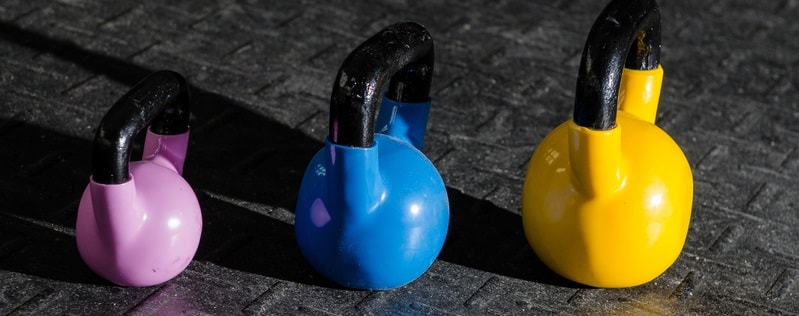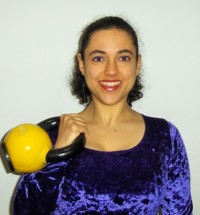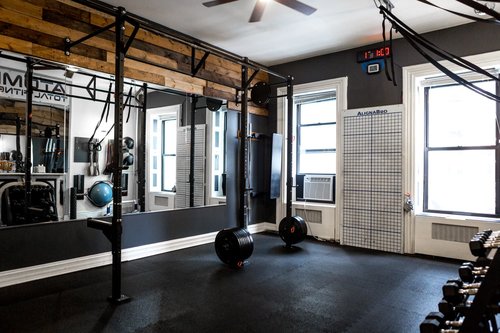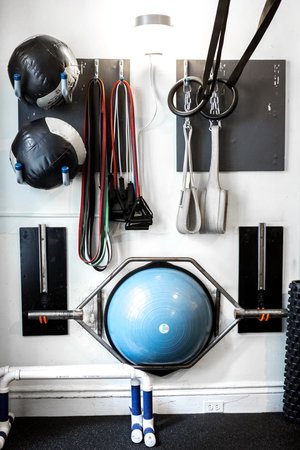November 28, 2017
 Interoception- Maintaining Internal Stability
Interoception- Maintaining Internal Stability
Most children are taught that the human body has five senses: sight, hearing, touch, taste, and smell, but many neurologists identify nine or more senses, and some list as many as 21.
As a Human Performance Professional who teaches the importance of movement longevity and how it can be utilizedto relieve chronic pain, the sense that I am most concerned in having people comprehend is that of our “Interoceptive Sense” – The ability to maintain internal stability which, in layman’s terms, is called Homeostasis.
Did you know there is an association between identity with self, emotion, breathing, and perception of pain?
We have all heard stories of friends or loved ones who fell ill from a certain type of dis-ease but literally neglected the internal signals that their very own bodies were desperately trying to warn them of until it was too late.
More common examples of interoceptive awareness are feelings of love, sensing danger, listening/following your intuition/gut feelings. Interoception includes both conscious feelings and unconscious monitoring of homeostasis which = safety & stability.
The nervous system has a specific sensory nervous system, and a sense organ, dedicated to each sense. That system is called the Fascial system. Fascia is Emotion. 80% of peripheral nerves in Fascia are free nerve endings and 90% of those nerves are interoceptive free nerve endings which lie in your visceral fascia which ties directly into your BREATH.
Our body is constantly seeking emotional stability. We are always attempting to describe emotional internal states that are continuously being monitored/regulated by the Autonomic Nervous System which has two main parts – The Sympathetic ( Fight or Flight ) and The Parasympathetic ( Rest & Digest ).

When you are safe your breathing is free & easy. When you are not safe your breathing is short and labored and withheld.
Let’s say your hip is not stable. From a neuro-muscular perspective all the muscles that surround or pass through the joint lock down in order to protect the joint from being injured. The brain then elicits unsafe feelings to the motor units. Alas, when movement occurs, the brain senses pain in the joint, and you unconsciously hold your breath which inhibits fluidity of motion.
If the deeper joint is feeling stable and all the deep muscle stabilizers are doing their jobs and activating in the right coordinated order, that constitutes feelings of a SAFE joint.
Interoceptive feelings of a safe joint allow the brain to elicit the proper chemical responses providing the necessary signaling the joint needs to properly transfer forces, all while enhancing the distribution of oxygen to the tissues resulting in enhanced performance.
Now imagine that you are feeling a range of emotions with no sense of their origin, and that you are not sure what thoughts these emotional sensations are actually sourcing from.

Spontaneously, there are feeling-emotions arising in your body and they may overcome your awareness, so that you pay close attention to them. Sometimes, this can feel like a wave of emotion that came out of nowhere and filled your body with a certain sensation.
These are days when we may wake up from bed feeling sad or heavy or feeling light and happy with no direct reason. When we are more developed with emotional sensing, we can easily identify our feelings in the moment, we can sense the energy behind words and we can sense the feeling and emotions of others.
For instance, we may sense negative emotions in ourselves and other people with a feeling of sharpness, heavy-density, and drudgery.
Or sensing positive emotions within our selves and others, may feel buoyant, easy, relaxed, flowing, expansive and harmonious.
These emotional animations can be sensed in the body from the instinctual mind also known as the Pain Body ( I recommend the book “The Power Of Now” by Eckhart Tolle ).
Or, we can experience higher emotions that may be sensed from within the heart center.
 For thousands of years this has been known as the internal Yin state, in which healing, regeneration and detoxification occurs.
For thousands of years this has been known as the internal Yin state, in which healing, regeneration and detoxification occurs. It is accompanied by increased parasympathetic tone, slowed heart rate, increased flow of saliva, increased bowel motility, feeling of relaxation or neutral emptiness.
Daily practice of meditation paired with deep breathingtechniques directly stimulates a parasympathetic response returning the body back into Homeostasis transmuting the DNA to activate the body’s INNATE healing response.
Breathing is the most under appreciated aspect of our incredible biology gifting us with the restorative ability of bringing harmony back within the human systems through the power of Oxygen.
***WARNING! It is hazardous to your health if you don’t breathe efficiently***
A chronic lack of oxygen is the root cause of inflammation that may lead to any and all types of cellular dysfunction.
O2 is the HAPPY molecule of life – The GROWING molecule of Life – The ESSENTIAL element for EVERYTHING.
When we practice proficient breathing we increase our interoceptive awareness ten fold. A safe and happy nervous system is impervious to infection, states of depression, chronic pain, and feelings of dread.
Flooding the brain with oxygen develops and improves our psycho-emotional awareness through observation, we are capable of making changes to our mental state and unconscious mind at the same time we are observing it.
Changes to our mental state and inner thoughts impact our outward behavior and our physical actions.
This shifts how we respond to our environment and how we interact within every relationship and social setting.
NOW is the time to take an ACTIVE role in healing ourselves, healing our lives.
When we can identify our emotional pain and are willing to take steps to heal our emotions, we empower ourselves in taking steps that lead us to spiritual freedom.
May love, peace and spiritual strength ( whatever sings to your heart ) bless you this holiday season!







 By Lisa Snow, personal trainer
By Lisa Snow, personal trainer

 When you are safe your breathing is free & easy. When you are not safe your breathing is short and labored and withheld.
When you are safe your breathing is free & easy. When you are not safe your breathing is short and labored and withheld.
 Spontaneously, there are feeling-emotions arising in your body and they may overcome your awareness, so that you pay close attention to them. Sometimes, this can feel like a wave of emotion that came out of nowhere and filled your body with a certain sensation.
Spontaneously, there are feeling-emotions arising in your body and they may overcome your awareness, so that you pay close attention to them. Sometimes, this can feel like a wave of emotion that came out of nowhere and filled your body with a certain sensation.
 For thousands of years this has been known as the internal Yin state, in which healing, regeneration and detoxification occurs. It is accompanied by increased parasympathetic tone, slowed heart rate, increased flow of saliva, increased bowel motility, feeling of relaxation or neutral emptiness.
For thousands of years this has been known as the internal Yin state, in which healing, regeneration and detoxification occurs. It is accompanied by increased parasympathetic tone, slowed heart rate, increased flow of saliva, increased bowel motility, feeling of relaxation or neutral emptiness.


 Or perhaps you sprained your ankle when slipping on icy subway stairs? Get off of your feet and focus on Pilates and other mat exercises. I’ve modified boxing workouts to let clients who’ve had foot surgery be seated while they punch, or even had them lie on their backs to do kickboxing moves without having to stand up. Pilates is a tricky one – it’s often recommended for bad backs, but if you don’t engage your core properly, you’re just going to end up with more back pain. It’s another good candidate for some one-on-one help, especially when you’re just starting out.
Or perhaps you sprained your ankle when slipping on icy subway stairs? Get off of your feet and focus on Pilates and other mat exercises. I’ve modified boxing workouts to let clients who’ve had foot surgery be seated while they punch, or even had them lie on their backs to do kickboxing moves without having to stand up. Pilates is a tricky one – it’s often recommended for bad backs, but if you don’t engage your core properly, you’re just going to end up with more back pain. It’s another good candidate for some one-on-one help, especially when you’re just starting out.












